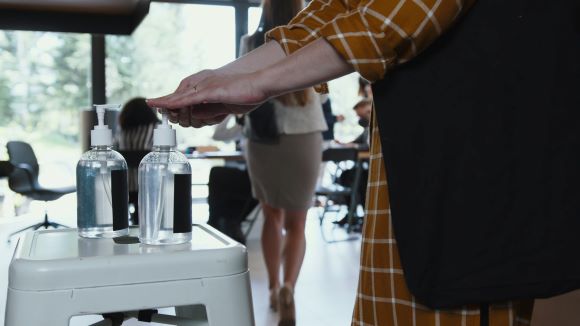A return to the office is something many employees hope for but may be hesitant to embrace given the COVID-19 pandemic. While things have started to slowly fall into, what is now, a new normal, things are far from getting back to how they once were. To adapt, many companies are pushing to a partial return to the office, but not without focusing on providing their employees with a safe and healthy environment.
With shared spaces being a popular option in today’s work scene favored by many companies given their affordability, networking opportunities and adequate workspace environment, implementing post-COVID measures is as essential as it is difficult, given the nature of the space. So, here are some things to consider, both short- and long-term, when ensuring your shared space is optimized for a safe return for your members’ employees.
Capacity Limitations and Occupancy Tracking
Allowing members to return to a shared office space is great as long as it’s done wisely. To ensure every user’s safety, putting a limit on the number of people allowed in the coworking space is mandatory. Not only will you be able to ensure that social distancing measures are in place, but also that people will not feel overwhelmed by working in a crowded space.
Reducing the number of desks and placing them according to social distancing guidelines will allow members to feel safe while working from the shared office space. Furthermore, using a coworking management software, you can ensure that members know that using your space is not only a safe shared office option, but also that they can be in contact with you at all times regarding any space, or other issues, they may have.
Redesign Conference Rooms for more Open Space
Given conference rooms are some of the most densely populated spaces at any given time, finding a way to provide a more aired-out collaboration space for your members is essential. Consider a room with windows to allow fresh air to come in, as well as a good ventilation system. Furthermore, hand sanitizer and disinfectant should be widely available throughout the room. The space should also be large enough to allow people to spread out and not all crowd over a table.
Using a coworking management software can allow you to easily see when the room is in use through a centralized booking system available both to your members and the staff. This way you can monitor who used it, how many people were in the room and when the room is available to be cleaned before the next group of people has to use it.

Technologically Advanced Safety Measures
Eliminating day-to-day objects that require regular contact, such as doorknobs, faucets and hand driers, is the easiest way to eliminate everyone touching that item, one after another. However, it’s more easily said than done. It requires replacing every one of those items with automatic and touchless technology. From motion sensor lights, toilets, faucets and hand soap dispensers, to hands-free bathroom and kitchen doors. Although not necessarily a short-term plan, all those changes are important to consider in the future for your shared office space.
Also, as a sanitation measure at the office level, UV light cleaning cycles may be a good investment to run either during the night or, in heavily trafficked spaces like conference rooms, kitchens and bathrooms, during the day when members are not using them. Furthermore, an improved ventilation system can make a huge difference in coworking spaces where open windows are not easily accessible, although any shared office space should consider investing in top-of-the-line systems.
Sanitation Stations
Sanitation stations are some of the most important considerations in your shared office space and are the most logical and affordable. Make sure users have easy access to any cleaning supplies they feel necessary for their workspace, from hand sanitizer to disinfectant solutions and cleansing wipes. To increase member satisfaction, ensure that each user can have a hand sanitizer bottle at their desk. Members should also be able to easily locate cleaning supplies in all common areas including bathrooms, kitchens, conference rooms and widely throughout the office space.

Replace Upholstery with Hygienic materials
As a long-term project, consider investing in upholstery made of hygienic materials. This includes desk surfaces, chairs, floors and any other object in the shared space that is constantly in direct contact with multiple users. Also, the furniture in your office should be resistant to being cleaned with harsh products regularly. So, in case you have to replace the upholstery in your shared space make sure you research for is both the best and most practical for your space.
While there are many ways to make sure your shared space is the safest environment for your members upon their return to the office, focus on the ones that are most important and that are possible for your space. To best monitor and optimize your shared space, take advantage of a coworking management software like Yardi Kube for increased efficiency and oversight.
